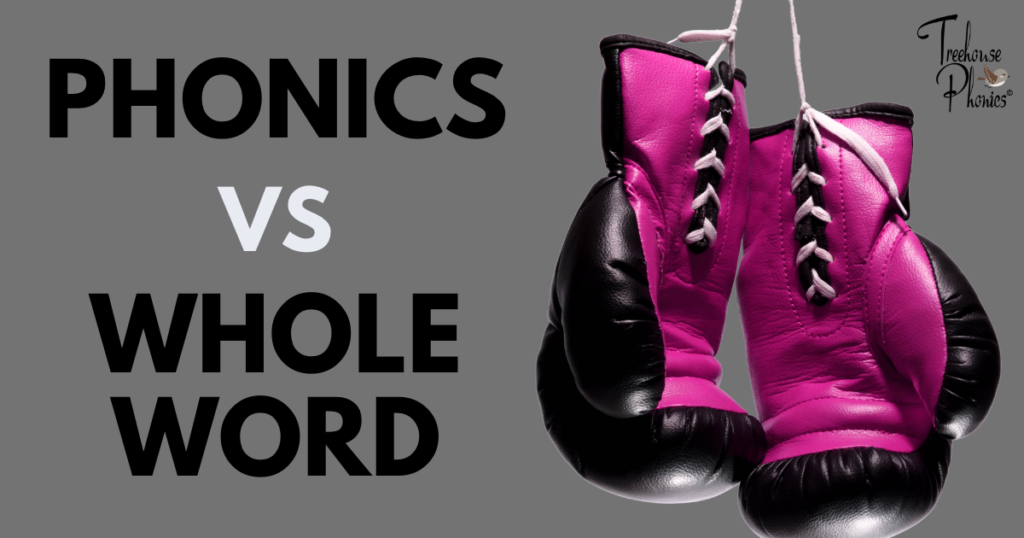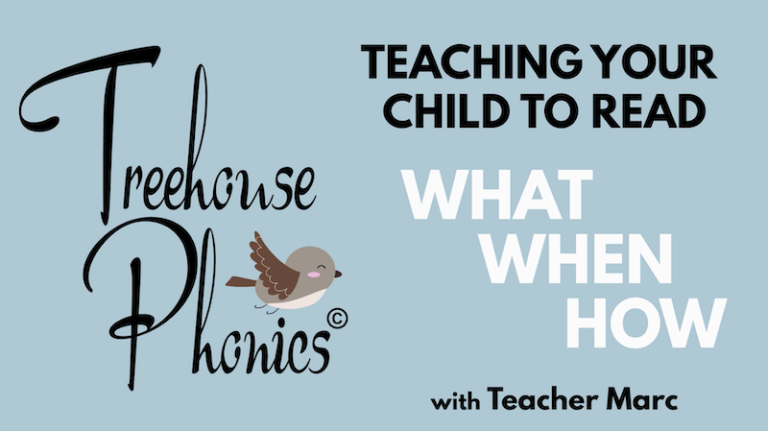Using the most effective tools when learning to read has never been more important, especially when our children are primed for optimum learning at such an early age. Today, we explore two heaver hitters; Phonics vs Whole Word.
Vocabulary growth and academic performance in all the core subjects are directly linked to a child’s reading ability and since learning to read will be one of the most important things a child will learn in the first ten years of life, we need to find the right tools to get results FAST. Within those 10 years, between the ages of 3 to 7, is what some would consider a hyper-sensitive ‘sweet spot’, where their cognitive growth is simply begging for new information. Their retention skills are nothing short of miraculous! I’ve seen children fluently speak five languages by the age of five with no formal instruction.
Let’s explore two methods that seem to be at odds with each other and yet, have proven to be substantially effective in their own way.
Phonics Approach
Phonics is about decoding words by mapping sounds (phonemes) to letters or symbols (graphemes). We see an unfamiliar word, we use phonics skills to pull it apart, one sound at a time (segmenting) and then blend those sounds to read or spell that word. My article, Phonics – In a Nutshell, explores this a little further.
Letters are not introduced in alphabetical order. Instead, sounds are carefully selected based on popularity and their frequency of use in English. Most programs will group these sounds by 6 or 7 and each group is generally taught together so that blending the sounds to form simple words happens right away. We need to map out 44 sounds (phonemes) by using 26 letters (graphemes), yet the math does not add up. A one-to-one ratio for mapping sounds would have made our lives a whole lot easier but since English borrows words from the French (over 30%), the Greeks, and the Germans to name a few, learning to spell can seem like a juggernaut of confusion and exceptions to the rule don’t spark confidence either. A decent phonics program will pay careful attention to patterns and common spellings or word families and group these together. Learning sounds is systematic and meticulously arranged to build upon previously mastered skills.
Again, the strength is in the decoding process. If you come across an unfamiliar word, you can fall back on phonics to break that word down by segmenting and blending the phonemes.
Whole Word Approach
As the term implies, the focus in on the word itself and not the phonemes within the word. This method relies heavily on a singular aspect of that explosive cognitive growth we see in younger children, where memory skills seem to be functioning at peak performance. With the Whole word method, children are repeatedly shown a word in print, supported with an image and audio. Every word is thus, a site word, learned at face value. Repeated exposure leads to memorizing and expanding their vocabulary. IF the student retains and continues to build vocabulary with this method, fluency is achieved at a substantial rate. Increased levels of fluency allow for a greater understanding of context and appreciation for the material being read. Thus, a love of reading may be achieved earlier and that is a good thing indeed!
Pros and Cons

Full disclaimer. I am biased toward Phonics. After all, you’re reading this article on the Treehouse Phonics website. With that said, I will do my best to present both sides of the coin as objectively as possible. If you feel that the Whole word method still holds true, by all means, go with that approach.
Memory Crutch
The first thing to consider is what I would call the Memory Crutch. Taking advantage of the explosive cognitive growth in children at an early age or working with that growth are two very different things. Asking a child to memorize a long list of words each week at face value WILL work for most children. Yet, be aware that if a child has less than average memory skills, they will fall behind so quickly that their exasperation and utter frustration will make it very difficult to recover and catch up. Their confidence will plummet and their joy of learning will take a swan dive.
Memory skills are very unforgiving. You either remember it or not. Our memories work best within a far greater scope of cognitive function. Cognitive skills include problem-solving, identifying patterns, categorizing, and so on. Learning how words are put together, identifying patterns in spelling, and developing the skills needed to break down irregular words cannot be mastered is we are simply memorizing them at face value. The following quote is absolutely priceless.
“If a child memorizes ten words, the child can only read ten words, but if the child learns the sounds of ten letters, the child will be able to read 350 sound words, 4320 four sound words, and 21,650 five-sound words” – Kozloff (2002)
Have I personally tested numbers? No, but even if he was off by half that amount, the logic still holds true. Learning the sounds might at first seem like a slower process and maybe less exciting or even overly repetitive but Phonics is a powerful skill set we simply can’t ignore.
Phonological Dyslexia

Some will argue that certain reading disorders such as Phonological Dyslexia make it next to impossible for children to hear the sounds in words. They are therefore at a disadvantage in achieving a significant level of Phonemic awareness to make phonics work for them. Thus, an educator may suggest that the Whole word approach may help, justifying that they only need to memorize how the word looks. There is credible logic at the outset but eventually, they will hit a wall and if memory is again, an issue, we are back to square one.
Luckily, there are those whose passion for phonics motivated them to find ways to help Dyslexic students grasp the mechanics of reading and spelling. Individuals like Samuel T. Orton and Anna Gillingham and their approach to learning to read through multisensory learning. Their approach is widely respected and any decent Phonics program will incorporate their methods to varying degrees throughout their course.
Whole Words Where Phonics Fails
We’re told that English is a complete mess. Irregular spelling patterns and exceptions to the rule are often met with the phrase; “We just need to memorize it.” Boom! The Whole word approach comes in and saves the day. In part, we can gloss over many irregularities by just accepting the way a word looks but what if I told you that we’ve been lied to this whole time and that over 90% of English words CAN be decoded with phonics. Again, knowing how and why a word is spelled a certain way, gives us the tools we need to face similar unfamiliar words with confidence and sound them out long before we need to be told what they are.
High Frequency Words

These are words used most frequently in any language. When these words become site words, recall is instant and since they are encountered often when reading, this gives us greater freedom to work on more challenging text. Many popular phonics programs will include a list of high frequency words based on the famous Dolch list (220 words) or Fry list (100 words). Even though they are included in the program, they are treated with the Whole word approach of memorizing them at face value. There is that memory crutch again! While we cannot help having to memorize a few at first, any high frequency word that can be sounded out with phonics can be incorporated into the program if that word is assembled using sounds they already know or are learning at that time. Again, over 90% of ALL words, including high frequency words, can be sounded out with phonics. This reduces a huge workload on memory.
The Whole word approach may facilitate a faster rate of fluency, arguably because we are spending less time decoding words, but relying on a fuller range of cognitive functions to arrive at the same rate of fluency, will feel less about guesswork and more about the confidence one feels knowing how our language is constructed.
Verdict

I warned you of my bias toward the Whole word approach and if this were a real court case, I would have certainly been disqualified for jury duty but with this said, I simply HAD to appeal to the sense of energy that comes from striking when the iron is hot. That explosive growth in cognitive function begs for high-octane methods that build a more solid foundation and endows our little ones with the unshakable confidence that comes from knowing that English is not a mess. In fact, it is a highly decodable language. Relying on memory alone is just too risky. Give phonics a chance and see for yourself!



